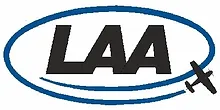I am in the middle of repairing a Jodel D11 and it requires a new Pitot/ Static unit, and whilst the original was a bent piece of tube and some holes in the side, they were fitted under the wing, I do not believe that there was any accuracy for the static but now because I require a mode S transponder and an accurate altimeter. I think a more accurate static is required. The original under the wing set up is in a high pressure zone it would cause an undereading of height to occur, the relationship between static and pitot is OK as it is the relationship between them that is measured for speed , but the altimeter needs a true static if it is to be reliable and accurate, devoid of postion errors.
Does anyone have a good idea for a true position for the altimeter and Transponder source of static that is better than the variable pressure system originally there, I was thinking of a multi origin common chamber static can, using several inlets from a vaiety of high and low zone positions.
The manufacturers use a BOMB type item trailed below in free air position to compare pressure and find the best compromise by experiment, but this is not an avenue for me.
Any ideas Lads
Regards
Graham
Pitot/ static positions
-
Steve Brown
- Posts: 257
- Joined: Wed Jan 02, 2008 11:00 am
-
NickChittenden
- Posts: 24
- Joined: Sat May 30, 2009 8:26 pm
- Location: Cornwall
-
Steve Brown
- Posts: 257
- Joined: Wed Jan 02, 2008 11:00 am
- macconnacher
- Posts: 256
- Joined: Wed Jan 02, 2008 9:26 am
- Location: Northampton
Trying to reinvent the wheel is hard work.
Just copy a factory built jodel such as a DR220/D150 Mascaret which are similar to the D.112.
With Fuselage mounted static ports they have as many problems of being in low/high pressure air as the traditional wing mounted dual pitot static head. Also if you go to fuselage static system you need to ensure that the tubes across the fuselage to the joint go up from the ports or else water will collect and possibly freeze leaving you with no reference static.
Just copy a factory built jodel such as a DR220/D150 Mascaret which are similar to the D.112.
With Fuselage mounted static ports they have as many problems of being in low/high pressure air as the traditional wing mounted dual pitot static head. Also if you go to fuselage static system you need to ensure that the tubes across the fuselage to the joint go up from the ports or else water will collect and possibly freeze leaving you with no reference static.
Stuart Macconnacher
002353
002353
